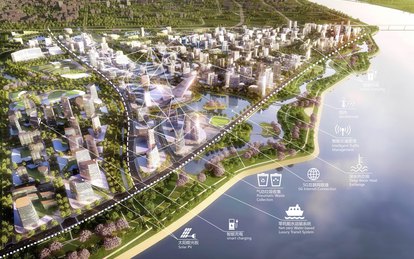领导者、落后者还是超越者?我们的能源未来取决于我们现在需要做出的决定-否则我们可能陷入被动

Although the President has recently announced his pull-back from the Paris Agreement, the market forces of cheap renewables and changing generational preferences are signaling a push towards a low-carbon future regardless of our legal framework. Yet, it is important in the US to realize then that energy project development specific to electrification cannot follow the same pathway that EU countries have. Pulling out of the Paris Agreement does not mean that the infrastructure projects that are needed to save the world will disappear; what it instead means is that cities and states will financially be responsible for the creation of such projects, instead of the traditional risk-taking central government, like in the case of the Hoover Dam. In this instance, pulling of the Paris Agreement in the US means that energy companies, public entities, and even communities need to work together to create the opportunities that are needed to advance energy projects from conceptualization to operation in the US markets. Considering the criticism on affordability of energy supplies that projects like the Energiegewende have created for European citizens[1], there is a critical moment now for US companies working in energy to reinvent (and reinvigorate) the decarbonization conversation by helping to define a “bottom-up approach” to the energy transition.
In contrast, Europe uses a top-down regulatory approach to the Paris Agreement, one that is reflected in their centralized-infrastructure approach. Their vision to decarbonization is coupled with a push for driving renewables across borders and installing a ‘supergrid’, a future high voltage/direct current-driven project. However, in the US, we have an opportunity now to redefine what climate leadership looks like for us- and our financial and technical constructions of the project can and should match it. Instead of using large-scale centralized systems, we can leap-frog the mitigation challenges that intermittent renewables can bring and can look towards localized energy resource districts to drive immediate sustainability, as well as resiliency in our aging power and thermal systems. Microgrids are probably the most attractive form of how to do so, and can be thought of as smart-grids on steroids; localized energy networks that minimize reliance on grid where possible, draw on renewables for more than load-shedding, and are able to island during times of traditional power failure. Yet where it’s hard to cross right-aways, the concept of a “hygrid’, a system that uses the grid as little as possible, and uses low-carbon onsite sources where possible, can become a useful conceptualization for utility modernization.
No matter the technology of choice, there is still an investment gap on sustainable infrastructure that must be recognized. While states like California and Massachusetts have followed the European approach, in states like Pennsylvania, Michigan, and Ohio, cheap renewables are also competing with cheap gas. Although taking a long-term outlook surely points to the benefits of sustainable thinking, traditional financiers, are not mandated to do so without the authority from a central bank. In order to make the case for building cleaner technology over business-as-usual, projects need to display that there is a true business-case for doing so- i.e., more people will chose that energy supply over the usual supply in favor of reduced greenhouse gas emissions (most oftentimes, for the purposes of tax-credits). Bankers themselves will be concerned with the risk profile of a project- of it not coming to fruition, so the major challenge in financing green deals in the US is to do it in a way that reduces the risk and guarantees the lender that the project will come to fruition. In this instance, city and state officials are responsible for signaling where infrastructure is needed. Bankable projects must be identified: projects that identify a ‘green’ need to show that they will generate sufficient cash flows to meet the obligations (returns) laid out by the lender. So how can we solve this gap? By planning better.
Cities and utilities in the US can help to demonstrate what “bottom-up leadership” on climate change looks like if only utility planning and urban master planning processes were more often concretely connected. The biggest risk in infrastructure tends to be political- infrastructure projects are long-term, lasting more than ten years on average. How can political risk be reduced? By having long-term political commitments to goals- the very heart of what masterplans are. Conversely, masterplans often take approaches that are community-scale, a methodology that lends itself equally well towards de-risking infrastructure. Rather than using large-scale, centralized systems, decentralized systems (or neighborhood scale systems) oftentimes match the risk-appetite of the urban entities who may be reluctant to commit to large debt commitments for one project that may fail. Doing utility planning alongside master planning can help to highlight opportunities where social and infrastructure needs overlap.
We need new energy systems that address affordability, accessibility, and the sustainability of energy, and decentralized energy systems can help to do so but they need identified and executed upon quickly. How can this happen? The first step needed is simply for political leaders to identify and prioritize the importance of energy infrastructures as the foundations of urban and rural communities and change what planning means to a city. This means prioritizing infrastructure projects in city budgets or changing the models of how cities try to solve their problems. Instead of proposing RFP’s for a specific solution, why don’t city-leaders push out RFP’s for a specific problem? Rather than requiring a one-size-fits all, why not let the private sector innovate around the operational infrastructures of energy systems. Partnership models can solve the sustainable cost-gap once projects are identified, but we need political leaders at the local-level to emphasize and retain the importance of the infrastructure challenges they need to be solved and commit towards solving them before time runs out.